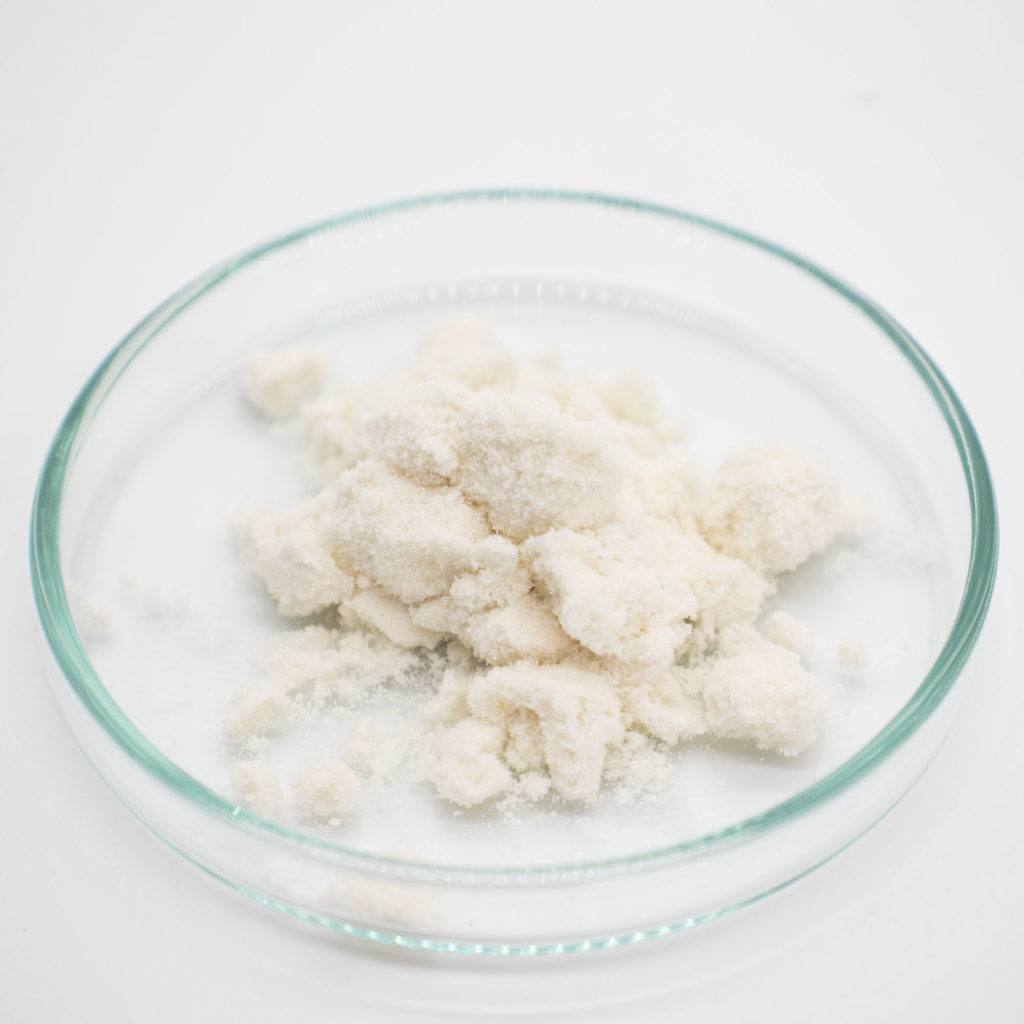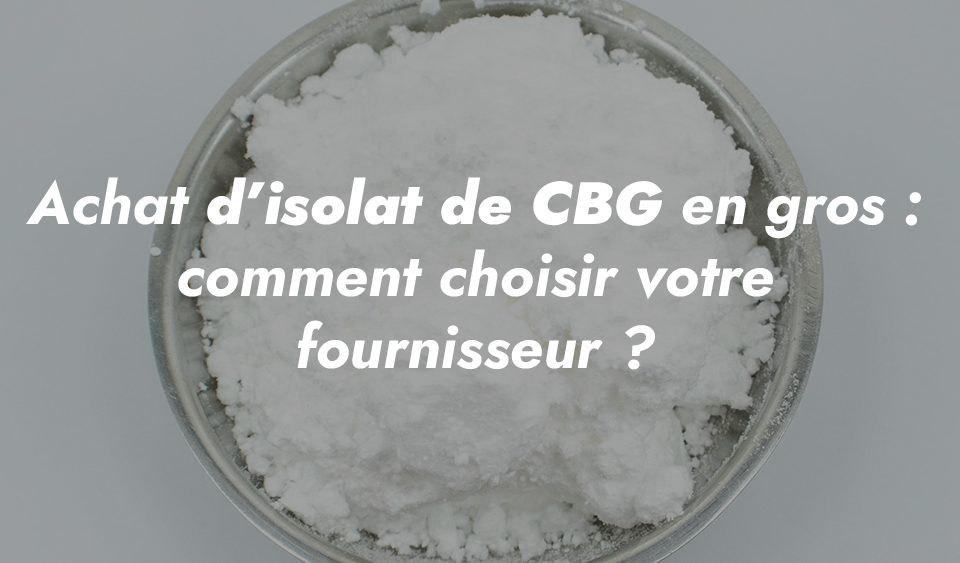
CBG: what is cannabigerol?
December 15, 2020
CBD, its properties for skin beauty (finally) recognized
February 15, 2021The cannabinoid family is vast (there are over 100 different substances!) and full of (pleasant) surprises. With this in mind, some researchers have turned their attention to a cannabinoid not always familiar to aficionados: cannabinol (CBN).
For once, we may well be witnessing the beginnings of a promising discovery...
After THC, CBD and CBG: CBN
For many, the effects of cannabis sativa boil down to the action of the THC/CBD duo. In fact, it is their proportion that differentiates therapeutic hemp (less than 0.2% THC, average 4% CBD) from recreational cannabis, whose THC content can exceed 10%.
Even so, it would be a shame (and inaccurate) to give them all the credit.
For example, cannabigerol (CBG) cannabigerol (CBG)present in only 1% of mature cannabis plants, is quite simply indispensable to the synthesis of our winning duo, since it is the precursor. See how all cannabinoids have a role to play!
CBN is also present in very small quantities in flower trichomes. During flowering, and even just after harvesting, the concentration of CBN is infinitesimal. In fact, it's when the flowers come into contact with oxygen - in other words, when they oxidize- that CBN levels become appreciable.
In fact, CBN is nothing more or less than the oxidized version of THC...
CBN, a close relative of THC?
CBN: direct descendant of THC
CBD and THC share a common origin: they are both synthesized from CBGA (the acid version of CBG). This is why CBG is sometimes referred to as a stem cell.
CBN has no obvious link with CBG. Moreover, unlike our CBD/THC duo, it is not synthesized during flowering. As we said, CBN occurs during flower oxidation.
Like all molecules in contact with oxygen, the chemical structure of tetrahydrocannabinol (THC) changes. In concrete terms, it loses a few hydrogen atoms... four, to be exact.
From C21H30O2it becomes C21H26O2, which is none other than our famous CBN. By the way: tetrahydrocannabinol.
A very different chemical identity!
Placed side by side, these two chemical formulas would almost force us to say that CBN is a soft version of THC. But that's a bit of a leap...
The psychotropic effects of THC are well known, and inevitably the question on the lips of the entire industry is: does CBN also have a euphoric, intoxicating and relaxing action?
No. Which is good news, because that makes it a legal cannabinoid. And like our beloved CBD, it's thanks to its "non-psychotropic" dimension that its effects and therapeutic applications are attracting the interest of researchers.
THC and CBN are indeed two different substances. To the untrained eye, this may not seem obvious, but once inside our bodies and subject to the complex chemical reactions that take place, it turns out that their effects are fundamentally different.
How does CBN behave in our bodies?
Its action on our endocannabinoid system
To understand how CBN acts once in the body, we need to understand the mechanism of the endocannabinoid system (ECS).
The SEC is an intercellular communication system with which all phytocannabinoids interact.
In other words, it's a network of receptors. These receptors, known as CB1 and CB2, are present throughout the body, and help maintain the balance of our biological functions.
Although few of us are really aware of its existence, the SEC plays a crucial role in the proper functioning of our metabolism. Among other things, it regulates body temperature, pH and motor coordination.
Endocannabinoidsystem, because it's an endogenous mechanism, i.e., we naturally produce cannabinoids : anandamide and AG2. And that's why research into phytocannabinoids is so promising... Our bodies are indeed "programmed" to take them in.
But let's close the parenthesis. Let's take a look at what we know about CBN's behavior.
Its affinity for cannabinoid receptors
As we've said, our ECS is made up of two main receptors: CB1 and CB2. Cannabinoids, which act as neurotransmitters, have more or less affinity with one or the other, depending on their chemical structure.
THC is a so-called CB1 agonist, as it stimulates the biological responses controlled by this receptor. As you may have guessed, these include the euphoric effects experienced.
CBN, on the other hand, seems to have more affinity with CB2. As some of you may know, CBD is also a CB2 agonist. As a result, CBN's potential therapeutic applications are similar to those attributed to CBD.

What do we know about the effects of CBN?
The (few) studies carried out on CBN
Like all cannabinoids, CBN is currently the subject of very few studies. Because of its low content and the specificity of its synthesis, CBN is rarely isolated and studied independently.
👁️
CBN has a vasodilatory effect
We know, for example, that CBD and CBN work together to reduce eye pressure.
💊
It is an analgesic
with recognized pain-relieving powers. Hemp has been used for this purpose since Antiquity.
🦠
Antibacterial
Other studies have highlighted the antibacterial power of cannabinoids. And once again, CBN is one of the substances mentioned.
At other times, the effects of CBN are studied in conjunction with those of THC. Such is the case with this study, which shows that both THC and CBN may increase appetite. Another clinical study on the effect of THC on patients suffering from amyotrophic lateral sclerosis refers to the therapeutic effects of CBN, which is said to act synergistically with THC.
Is there a single study in which the CBN has been isolated?
Yes, one (as far as we know), but not the least, because it seems that CBN is capable of acting at the level of programmed cell death, a biological process that antagonizes cell degeneration, i.e., tumors and cancers.
CBN is a sedative: fact or fiction?
Certains d’entre vous ont peut-être entendu dire que le CBN est le cannabinoïde responsable de l’effet sédatif du cannabis. Il semblerait effectivement que certaines variétés, connues pour leur effet « down » soient caractérisées par une concentration en CBN plus élevée que chez celles de la famille « high ».
But when it comes to cannabis, as in all fields, it's hard to tell the difference between right and wrong. Especially as, in this case, the answer is not as obvious as it might seem.
To find out, a handful of scientists decided to investigate. Five volunteers successively consumed THC alone, THC + CBN and, finally, CBN alone. The findings were as follows:
Conclusion: CBN is not the cannabinoid responsible for the sedative effect of certain varieties. It is THC that induces this state. On the other hand, CBN does enhance the action of THC.
What do we know about the effects of CBN?
We know that CBN plays an important role in all the therapeutic effects observed with CBD and THC. But as far as its specific action is concerned, "only" the anti-cancer track is really being explored.
However, the world of phytocannabinoids is increasingly attracting the attention of researchers. The craze is only a matter of time, even for the more discreet cannabinoids.
As far as CBN is concerned, some outsiders are already working on a variety with a higher cannabinol concentration, making its application more interesting from a practical and cost-effective point of view.
In fact, there are currently products on the market with CBN concentrations approaching 5%. Caution is advised, however, and as with everything, it's best to find out everything you can before placing an order.
Our CBN-based products :
Isolat
CBN

Whitish in color and completely odorless, isolate is the purest form in which a cannabinoid can be found.
Hemp oil
"Stress & Sleep "

Concentrated hemp oil with 5% CBD and 5% CBN from Nobilis Product. 10ml bottle with pipette.
Hemp Seed Oil
"Formule Confort

Concentrated hemp oil with 5% CBD, 5% CBG and 5% CBN from Nobilis Product. 10ml bottle with pipette.





